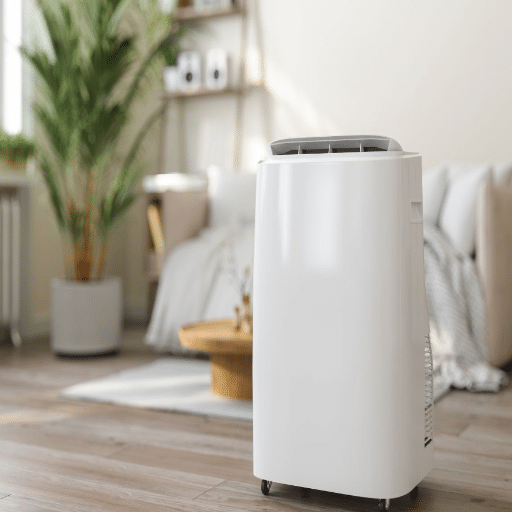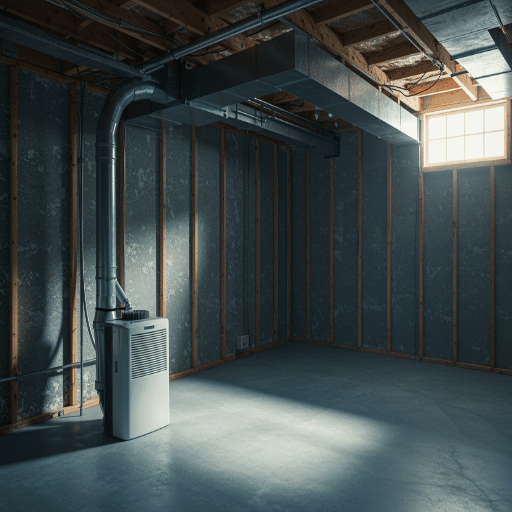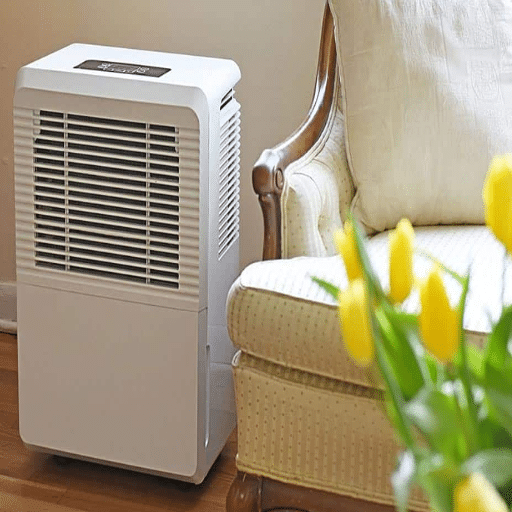High humidity levels can lead to various problems like the growth of mold, destruction of goods, and poor living conditions. The idea of dehumidifying the air all the time might be a good solution for people who have constant problems with moisture. But the question is, is it safe, energy-efficient, or even necessary to keep such a device working all the time?
This comprehensive guide delves into the workings, efficiency, and continuous use of dehumidifiers along with the disadvantages it could bring about. After reading this article, you’ll understand whether running a dehumidifier nonstop is the best method to keep indoor humidity steady and the key points to consider in order to achieve both great performance and affordability.
Understanding Dehumidifiers

Dehumidifiers are machines that work by taking the water vapor out of the air and thereby lowering and controlling the humidity levels in indoor areas. They do this by pulling in humid air, cooling it to the point that the moisture condenses, reheating the now dehumidified air, and then sending it back into the room.
Continuous operation of a dehumidifier is indeed a good practice in places with high humidity all the time since it can control mold and bacteria to a certain extent, cut down on the presence of dust mites, and save materials like wood from moisture-related damages. On the other hand, it doesn’t mean that you have to run it every hour of the day all the time.
What is a Dehumidifier?
A dehumidifier is an electrical device to reduce and control the amount of moisture in the air mainly to enhance the quality of indoor air and to prevent moisture-related damage of property. It is a process that involves high technology but basically the device works by sucking in the moist air, passing it over the cold coils where the vapor is condensed and turned into liquid, and finally blowing the dry air back into the room.
The demand for dehumidifiers has raised significantly due to the increased awareness of the benefits of dehumidifiers in reducing problems like mold growth, accumulation of allergens, and even the deterioration of the building structure due to high humidity. Today’s dehumidifiers often incorporate energy-saving designs, built-in hygrometers for accurate control, and modes that are optimized for different places like basements or large spaces, thus being a must for indoor air that is healthy, pleasant, and safe.
How Does a Dehumidifier Work?
A dehumidifier works through a multi-step process in which it removes excess moisture from the air, thereby lowering relative humidity in the area where it is installed. The process typically involves:
- Air Intake: A fan pulls in humid air from the surrounding environment
- Cooling/Absorption: The air is directed over either refrigerated coils or a desiccant material, depending on the type of dehumidifier
- Condensation: Water vapor condenses into liquid water which is collected in a reservoir or drained through a hose
- Air Release: The dried air is released back into the room
Modern Advancements: The technology used in dehumidifiers has undergone significant improvements, including:
- Integrated sensors such as hygrometers that monitor ambient humidity levels in real-time
- Automatic switching on/off to maintain optimal conditions (30-50% relative humidity)
- Smart home features including app connectivity and voice control
- Remote operation and management capabilities
Types of Dehumidifiers
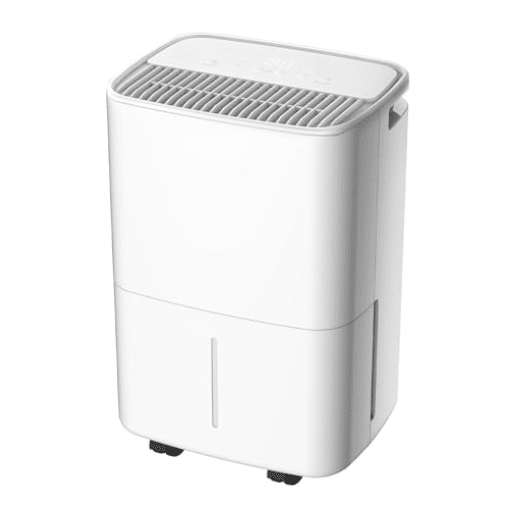
| Type | How It Works | Best For | Key Features |
|---|---|---|---|
| Refrigerant Dehumidifiers | Uses a cooling cycle to extract moisture from the air | Hot and humid conditions | Most powerful moisture removal; performance drops at low temperatures |
| Desiccant Dehumidifiers | Utilizes porous materials that retain moisture | Low-temperature conditions, closets, basements | Lightweight, quiet operation (no compressors) |
| Thermoelectric (Peltier) | Based on the Peltier effect for moisture extraction | Small spaces: offices, bedrooms, storage | Energy-efficient, silent, compact design |
| Whole-House Dehumidifiers | Works with HVAC systems | Larger residential or commercial buildings | Complete humidity management throughout entire space |
The Importance of Managing Humidity
Humidity management is crucial for regulating the comfort and safety of the indoor environment. Proper humidity control is becoming increasingly important as people become more aware of the consequences caused by imbalanced humidity levels.
Effects of High Humidity
High humidity levels have a range of effects on health, infrastructure, and energy consumption:
- Health Impact: Proliferation of mold, mildew, and dust mites leading to respiratory problems, allergies, and other health issues
- Structural Damage: Wooden frames warp, metal parts rust, paint falls off or forms bubbles
- Energy Consumption: Air conditioning units work harder to pull moisture out of the air, increasing energy usage and reducing system efficiency
- Property Damage: Materials exposed to moisture for long periods are likely to decay
How Humidity Affects Your Health
| Humidity Level | Health Effects | Recommended Action |
|---|---|---|
| Above 60% | Promotes mold, dust mites, and bacteria; triggers allergies and asthma; heat-related illnesses; dehydration; discomfort | Use a dehumidifier to reduce moisture levels |
| 30-50% | Optimal range – reduces health risks and supports general well-being | Maintain this range with proper monitoring |
| Below 30% | Drying of respiratory tract; increased susceptibility to flu; skin and eye irritation; worsening of eczema | Use a humidifier to add moisture to the air |
Running a Dehumidifier 24/7
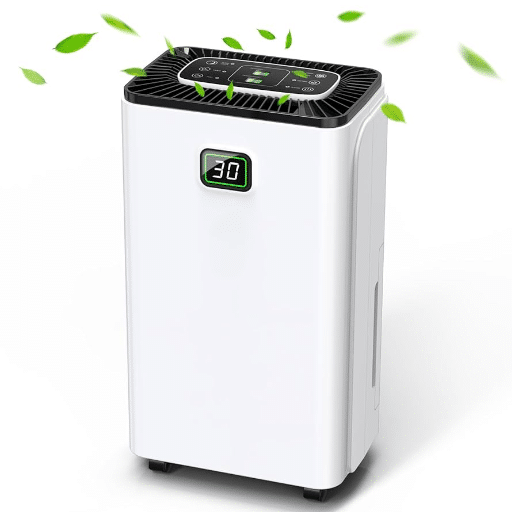
Keeping a dehumidifier running all the time can be both a safe and an effective measure, but only if the right conditions are met. The new types of dehumidifiers are those that conduct their working in a good and energy-efficient way over long runs together with many of them having an auto shut-off option that protects them from surpassing their usage limit or getting damaged.
Is It Safe to Run a Dehumidifier Continuously?
Operating a dehumidifier continuously is mostly safe as long as the appliance is working properly and maintained according to the manufacturer’s instructions. Modern dehumidifiers feature:
- Auto-shutoff mechanisms
- Adjustable humidity settings
- Energy-efficient operation capabilities
- Built-in safety features
Important Considerations:
- Continuous operation without control could waste energy and shorten device life
- Use a hygrometer to monitor real-time humidity levels
- Ensure air doesn’t become too dry (can cause breathing problems, skin irritation, and discomfort)
- Clean air filters and water reservoir regularly to prevent mold and maintain efficiency
Benefits of Continuous Operation
- Consistent Humidity Control: Maintains steady humidity levels below the threshold where damage occurs
- Mold and Mildew Prevention: Reduces development of harmful microorganisms that cause health issues
- Energy Efficiency: Modern units with sensors and auto-regulating systems adjust energy consumption dynamically
- Structural Protection: Prevents moisture damage to wood, paint, and metal fixtures
- Improved Comfort: Eliminates dampness, dripping, and musty smells
- Health Benefits: Reduces asthma triggers and allergic reactions
Potential Drawbacks of 24/7 Use
| Drawback | Impact | Solution |
|---|---|---|
| Increased Energy Consumption | Higher electricity bills and greater carbon footprint | Use ENERGY STAR certified units; set appropriate humidity levels |
| Equipment Wear | Excessive pressure on components; shortened lifespan | Regular maintenance; follow manufacturer guidelines |
| Noise Level | Discomfort during long-term use | Choose models with noise reduction features; proper placement |
| Over-drying | Air becomes too dry causing discomfort | Use built-in humidistat; monitor with hygrometer |
Best Practices for Dehumidifier Use
Essential Best Practices:
- Operate Within Limits: Follow manufacturer’s temperature and humidity limits
- Regular Maintenance: Clean or replace air filters according to instructions
- Proper Placement: Place on flat, stable surface to reduce vibrations
- Water Management: Empty reservoir frequently or use continuous drainage hose
- Optimal Settings: Set humidity at 30-50% for best results
- Energy Efficiency: Choose Energy Star-rated units with eco-friendly refrigerants
- Smart Operation: Turn off when humidity is low to save energy
How Long Should You Run a Dehumidifier?
The optimal runtime depends on several factors:
- Room size: Larger spaces require longer operation
- Current humidity level: Higher humidity needs more runtime
- Target humidity: Your desired humidity level
- Season: Wet months may require more operation
General Guidelines:
- Moderate to High Humidity: 8-12 hours daily, especially in wet months
- Humidity Over 60%: May require 24/7 operation until reaching 30-50% range
- Smart Models: Automatically adjust settings based on ambient conditions
Monitoring Humidity in Your Home
Monitoring indoor humidity levels is key in keeping a living place comfortable and healthy. Here’s what you need to know:
- Ideal Range: 30-50% relative humidity
- Tools: Digital hygrometers with accurate sensors provide real-time readings
- Smart Integration: Connect devices to smart home systems for automatic control
- Regular Checks: Monitor humidity levels consistently to prevent problems
Special Applications
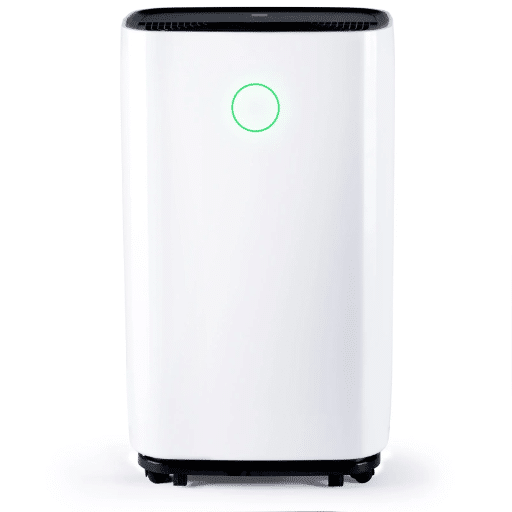
Using a Dehumidifier in Crawlspaces
Crawlspaces present unique moisture challenges that require specific solutions:
Crawlspace Dehumidifier Selection:
- Choose units specifically designed for crawlspaces
- Look for compact, solidly built models
- Select high-capacity units for large or very moist spaces
- Prioritize automatic humidity control and energy efficiency
- Consider smart home system integration
Proper Installation:
- Place in the middle of the room
- Keep above floor level
- Position close to an outlet
- Ensure even moisture removal
Additional Measures: Combine dehumidifiers with vapor barriers, good drainage systems, and constant checking to reduce moisture-related risks effectively.
Complementing Dehumidifiers with Humidifiers
The tandem use of dehumidifiers and humidifiers is important for maintaining optimal indoor air quality, especially in areas with varying weather conditions.
| Device | When to Use | Benefits |
|---|---|---|
| Dehumidifier | High humidity environments (above 50%) | Reduces mold, prevents wood damage, improves comfort |
| Humidifier | Very dry conditions (below 30%) | Alleviates skin irritation, breathing problems, static electricity |
| Both Together | Transitional seasons (spring/fall); different room conditions | Maintains optimal 30-50% humidity throughout home |
Vapor and Condensation Considerations
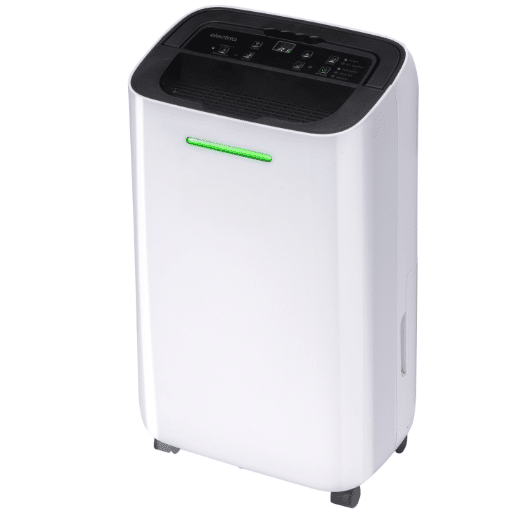
Managing vapor and condensation is paramount in preserving both structural integrity and occupant comfort. When warm, moist air contacts a colder surface, condensation occurs, producing water droplets that can:
- Create an environment conducive for mold and mildew
- Compromise building materials like wood, drywall, and insulation
- Lead to long-term destruction and health threats
Prevention Techniques:
- Maintain indoor humidity at 30-50%
- Use proper ventilation systems with dehumidifiers
- Enhance insulation
- Fix air leaks
- Install vapor barriers where needed
References
-
Don’t Let Mold Move In: Simple Strategies for Maintaining a Dry, Healthy Residential Space – A resource from Ohio University discussing strategies for maintaining dry indoor spaces, including the use of dehumidifiers.
-
Advanced Dehumidification Analysis on Building America – A study from Purdue University analyzing the performance and energy efficiency of dehumidifiers in residential settings.
-
High Humidity Basement, Dehumidifier Running 24/7 – A discussion on managing high humidity levels in basements, including the continuous operation of dehumidifiers.
Frequently Asked Questions (FAQ)
During high humidity conditions, can you operate a dehumidifier 24/7?
Sure! running a dehumidifier 24/7 even in high humidity is not an issue at all. Working continuously you will be able to achieve the humidity level you want and catch mold before it starts, more so in places like basements or crawl spaces where moisture is a problem; and so you will be able to keep mold at bay.
How long should a dehumidifier be operated to achieve a reduction in humidity?
How long you need to run a dehumidifier is dictated by the humidity level in your household. Usually, it is advised to keep it running until the humidity meter shows the relative humidity is between 30 and 50 percent. However, this may be different due to the presence of water intrusion or leaking areas in the house.
Is it alright to continuously run a dehumidifier?
In general, it is okay to let a dehumidifier run at all times, as long as it has been properly sized for the space it is to be used in. Most of the new models have on-device humidistats which can modulate their operation according to the humidity in the air thus saving energy.
What should you do when the water tank of your dehumidifier gets full?
When a dehumidifier removes so much water that not only is it replacing the tank constantly but it’s also full, you must uninstall the tank so that it doesn’t miss the chance of operating effectively. A few models have the choice of a continuous draining system which negates the need for filling up and emptying tanks manually.
Do you have the option to run a dehumidifier in the coldest months?
Definitely, a dehumidifier can be run in winter months; in addition, it would be great to have such a solution if condensation is a problem in your site. Nonetheless, you should be careful with the outside temperature because very low temperatures might make some dehumidifiers less efficient in terms of operation.
Can a dehumidifier solve mold problems in the house?
Dehumidifiers can be a good ally in humidity reduction and mold prevention. By keeping the relative humidity below 50%, you will thus be able to provide a non-favorable environment for mold to thrive, especially in all areas that are moisture prone such as a finished basement.
What is the most efficient way to run a dehumidifier?
To make the most of your dehumidifier, make cleaning the filters and keeping the unit in an area with good airflow part of your routine, and also keep an eye on leaky spots in your house. Besides that, setting the appropriate humidity level on the built-in humidistat will yield maximum performance.
If I have a portable air conditioner do I still have to use a dehumidifier?
If you own a portable air conditioner, you might not have to keep running the dehumidifier since many air conditioners do dehumidify, too. Still, during the most humid times, using both will make your space more comfortable, and even the air conditioning unit will work more efficiently.
What indications can I rely on if I need a deh umidifier?
When you see moisture on the walls, detect a musty smell, or get high humidity readings in your basement, that’s probably a good sign that a dehumidifier will be helpful in your case. Moreover, if you are regularly facing water intrusion or condensation, it is a strong indicator that a dehumidifier could be helpful.

